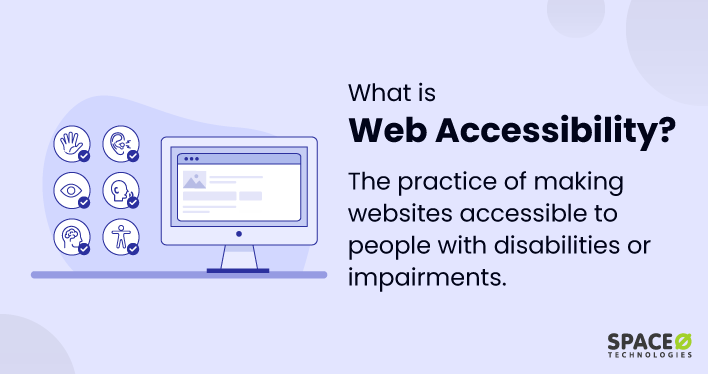News Blast
Your daily source for breaking news and insightful articles.
Bridging the Digital Divide with Web Accessibility
Unlock the internet for everyone! Discover how web accessibility can bridge the digital divide and empower all users today.
Understanding Web Accessibility: Key Principles for Bridging the Digital Divide
Web accessibility is an essential aspect of web design that aims to ensure all users, including those with disabilities, can access and interact with websites effectively. Understanding the key principles of web accessibility is crucial for bridging the digital divide. These principles are often summarized by the acronym POUR: Perceptible, Operable, Understandable, and Robust. By ensuring that content is perceivable to all users, such as providing text alternatives for non-text content, we take the first step in making the web inclusive. Additionally, creating user interfaces that are operable through various input methods—like keyboard navigation—enhances usability for everyone.
Another important aspect of web accessibility is ensuring that content is both understandable and robust. This includes using clear language and intuitive navigation to help a diverse audience effectively comprehend and utilize the information presented. Furthermore, maintaining robustness means that web content should function properly across various browsers and assistive technologies. By adhering to these principles, developers and designers can significantly reduce the barriers that many users face online, ultimately promoting an inclusive digital environment and fostering equal access to information and services.

The Importance of Inclusivity: How Web Accessibility Empowers All Users
Web accessibility is a crucial aspect of inclusivity that ensures all users, regardless of their abilities or disabilities, can navigate and interact with online content effectively. This initiative not only adheres to legal requirements but also fosters a culture of respect and equality in the digital landscape. By implementing accessibility features, such as screen reader compatibility, keyboard navigation, and alternative text for images, web accessibility transforms the online experience for individuals with vision impairments, hearing disabilities, or cognitive challenges. Inclusivity in web design empowers the diverse spectrum of users, making the internet a welcoming space for everyone.
Moreover, adopting inclusive practices in web design benefits businesses and organizations by expanding their reach and enhancing user engagement. Studies have shown that accessible websites often result in increased traffic, improved user satisfaction, and higher conversion rates. When websites are designed with inclusivity in mind, they not only cater to users with disabilities, but also make content more user-friendly for individuals on mobile devices, older adults, and those with varying levels of digital literacy. Ultimately, embracing web accessibility is not just a legal obligation; it’s a powerful step towards fostering a more equitable online environment for all.
10 Common Misconceptions About Web Accessibility You Should Know
Web accessibility is often misunderstood, leading to misconceptions that can hinder progress in creating inclusive digital spaces. One common belief is that web accessibility is solely about meeting legal requirements. In reality, it's about ensuring that all users, regardless of their abilities, can engage with your content effectively. Most people fail to recognize that web accessibility benefits not only those with disabilities but also enhances the user experience for everyone. For example, utilizing clear navigation and proper headings can improve usability for all visitors.
Another prevalent misconception is that implementing web accessibility features is too complicated or time-consuming. While it might seem daunting initially, there are many resources and tools available today that can simplify the process. Making your website accessible doesn't require a complete overhaul; often, it just involves following some best practices, such as providing alternative text for images and ensuring that your site is navigable via keyboard. By embracing web accessibility, you pave the way for a broader audience and demonstrate a commitment to inclusion, which can positively impact your site's reputation and SEO performance.